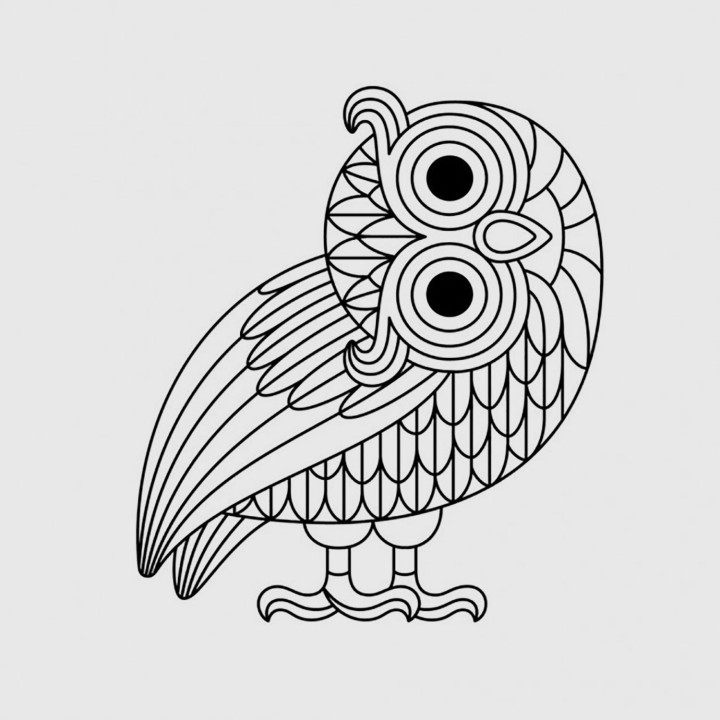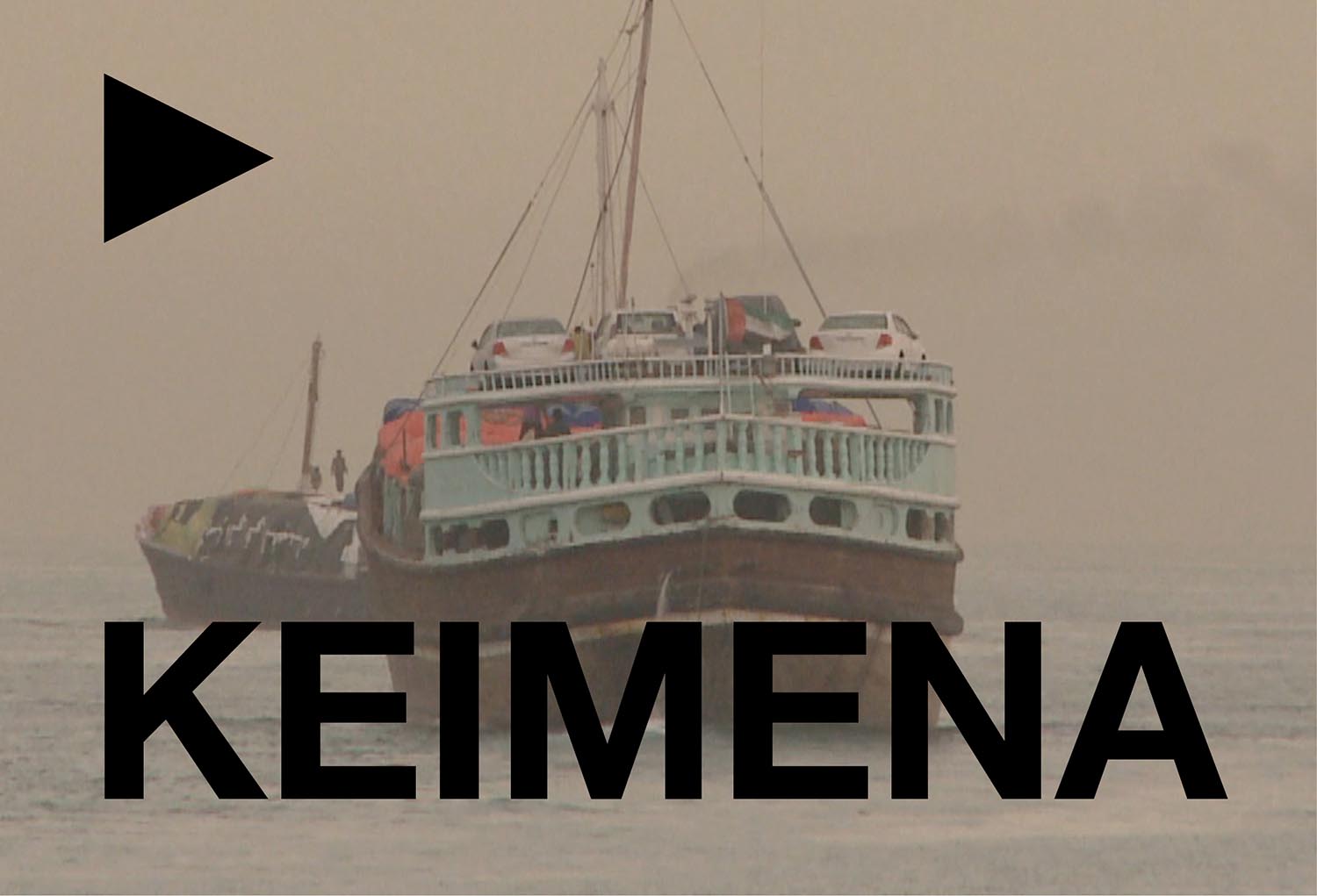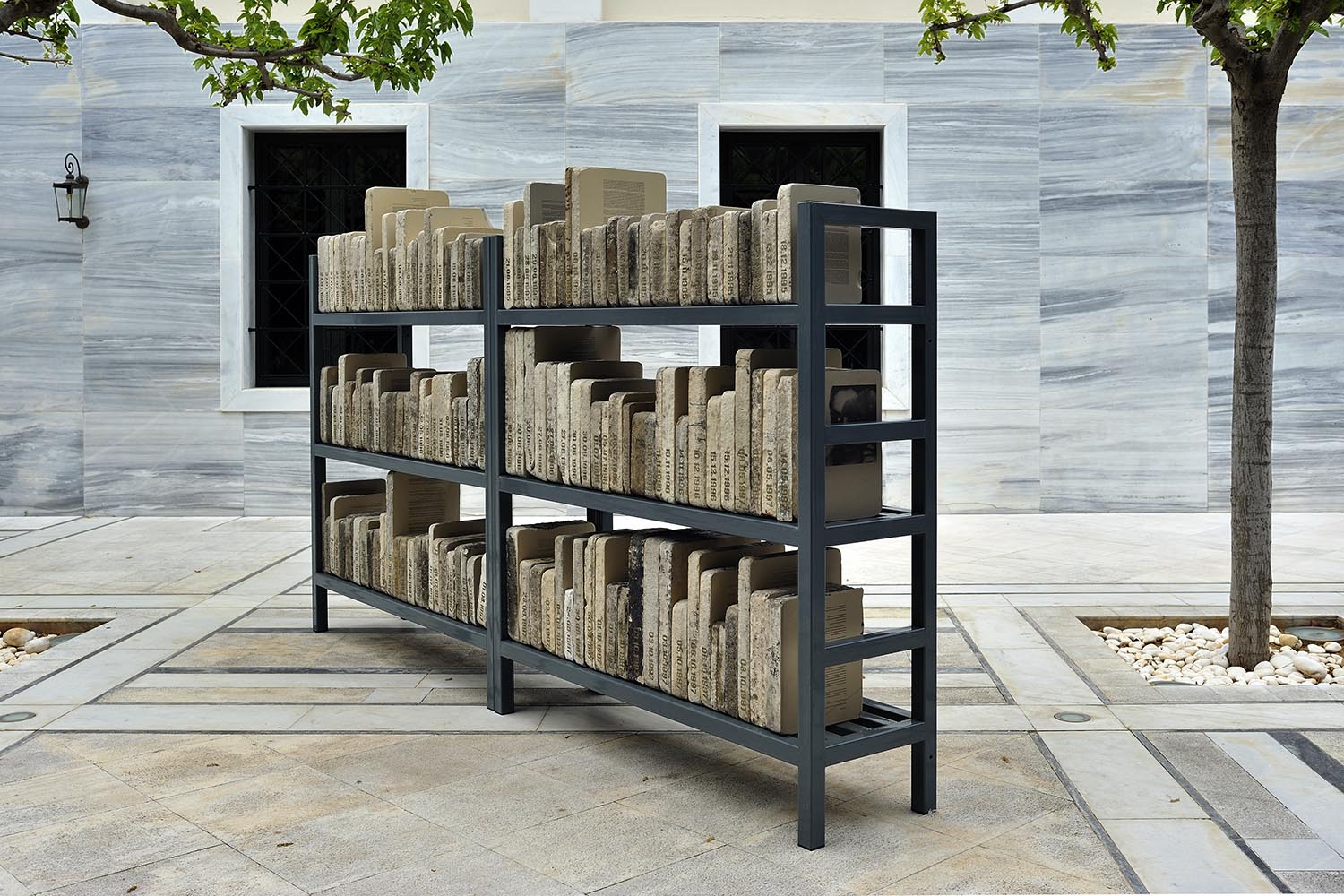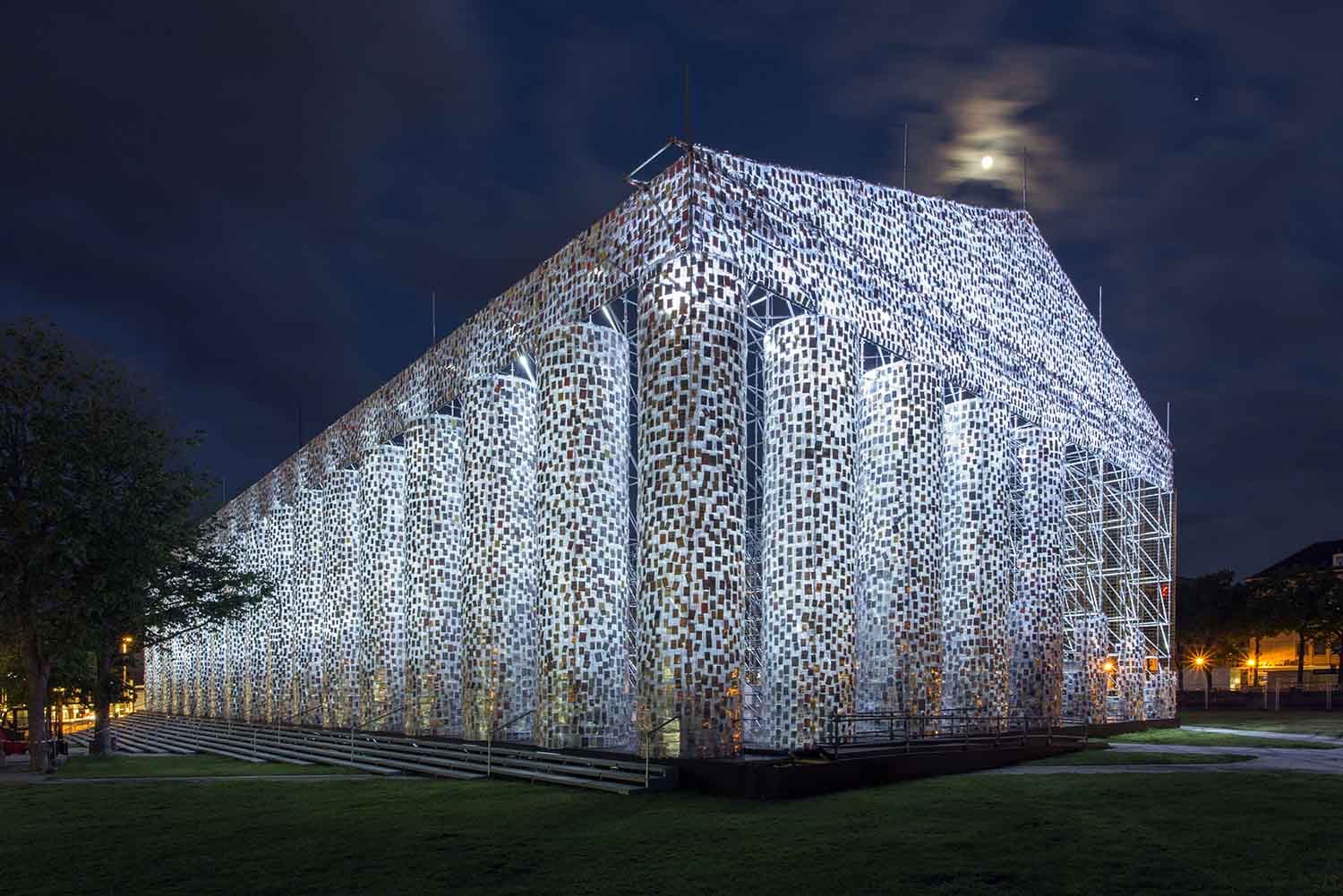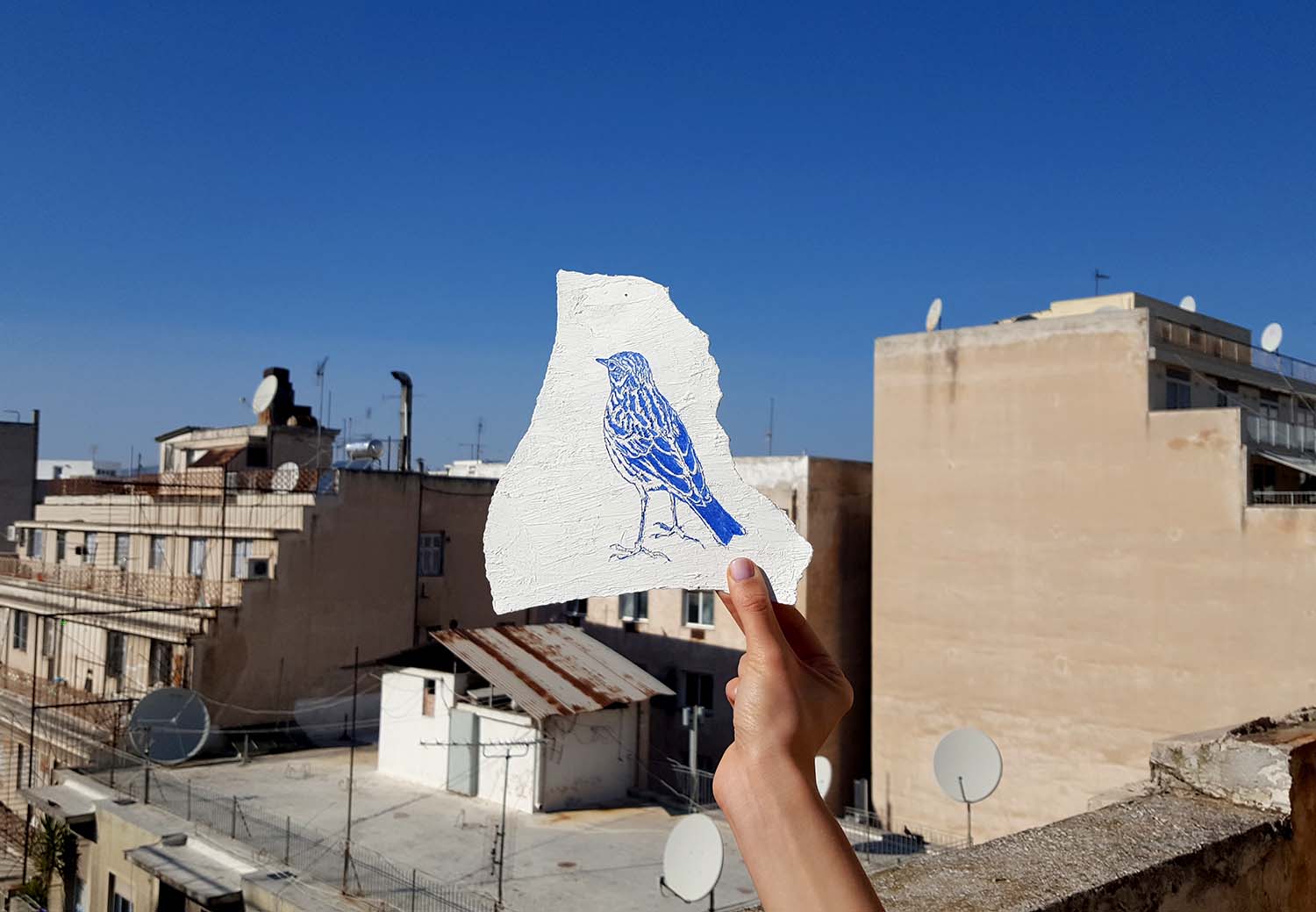Several months before the official opening of Documenta 14, which has chosen Athens as a forum alongside Kassel in Germany, last September saw its inauguration with “The Parliament of Bodies” in Athens’s Parko Eleftherias (translated as Freedom Park).
Drawing from the name of the location designated as the first of the exhibition’s spaces by the municipal authority, the building, which previously housed the headquarters of the military police during the junta (1967–74) and is adjacent to a former detention and torture facility from that period, hosted thirty-four “exercises of freedom.” These varied from speeches and actions to workshops and musical performances. All dealt with the diverse notions of “freedom.”
Within the structure, sixty-eight movable faux-concrete blocks, designed by artist and architect Andreas Angelidakis, serve as soft ruins on which to perch, and locate ancient Greek democracy within a modernist frame. This juxtaposition of the assumed formality of antiquity and a contemporary Western architecture serves as an apt analogy for the exhibition itself, sensitively yet openly referring to the tensions experienced when hosting such a large-scale exhibition and public program dealing with provocative issues in a city grappling with many issues of its own. Adam Szymczyk, the artistic director of this fourteenth edition of the exhibition, has been quite clear from the outset that the exhibition “can only visit Athens as a guest, with all the limitations and possibilities such status implies.”
The dearth of official announcements regarding the exhibition itself has been mitigated by a rich public program of discussions and workshops since September, directed by Paul B. Preciado, the festival’s most visible face in Athens up to now. Covering a broad range of topics including identity politics, gender, sexuality, deinstitutionalization, migration, yoga, necropolitics and cooperativism, the continuing public program has seen appearances from individuals as diverse as Terre Thaemlitz and Antonio Negri, and has inspired a flurry of discourse, perhaps most evident in the independent “Learning from documenta” anthropological discussion group, who have also invited a large number of international speakers to critically observe the exhibition’s presence in the city, including by investigating the semantics of the exhibition’s working title, “Learning from Athens.”
Announcements that have reached beyond the artistic community in Athens include that of Keimena, the weekly broadcast of experimental documentary and narrative films on Greece’s state TV network, Every Time a Ear di Soun, a 24-hour radio programme that will broadcast internationally for 3 weeks during the exhibition, and that of a parade of twelve horses that will circumnavigate the Acropolis along the area’s pedestrianized walkways during the opening event of the exhibition, with the troupe depicting scenes from the Parthenon frieze. The horses and riders will continue on a hundred-day journey to Kassel, riding through the Balkans. With Athens experiencing an unprecedented proliferation of peripheral artistic happenings, excitement for the eventual opening of the exhibition continues to brim.

